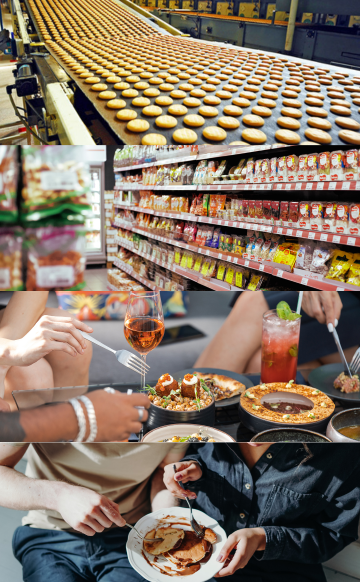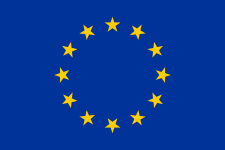
WASTELESS: Waste quantification solutions to limit environmental stress
The WASTELESS project will develop and test a set of innovative tools and methodologies for measuring and monitoring food losses and food waste. It will follow a bottom-up approach: starting with the definition of a harmonized methodological framework and a set of standards for testing activities, evaluating the implementation of the tools and the quality and integrability of data produced in other frameworks, and finally recommending sustainable policies and business strategies to lay the foundation for a harmonized framework at EU level.
In addition to measurement and monitoring tools, WASTELESS will conduct research activities on innovative processes and flows to valorize unavoidable FLW. With the ambition to make existing FLW quantification solutions and those of WASTELESS usable by all food stakeholders, a decision support toolbox will be developed so that any interested party can access the most appropriate methodology, digital tools and solutions for FLW valorization, all aggregated with the environmental and socio-economic impact associated with the implementation of the solutions. This will enable the replication of data collection centers across Europe, feeding the model developed by the JRC with robust, reliable and comparable FLW data.
GOALS
1) Develop and test a combination of innovative tools and methodologies for measuring and tracking food loss and waste (FLW), generating robust FLW data on critical and poorly understood food supply chains (FSCs).
2) Recommend a harmonized methodological framework for FLW quantification; and
3) Develop a systemic decision-support toolbox aimed at all stakeholders in the food value chain that enables the replication of WASTELESS collection points across EU territories and different food commodities.
OUR ROLE
Ctic Cita is leading the Demonstration of innovative measurement tools in selected food systems; a task in which it will develop 3 case studies: food industries (canned and processed vegetables – GVTARRA), households and chicken supply chain (UVESA).

case studies

- Food industries: food waste measurement tools will be tested in the real environment of different industrial food processing companies: fruits and vegetables, canned and processed vegetables; pasta, olive oil, tomato and fruit juice; and bakery, sausages and dairy products. In addition, the roots of food waste showing poor efficiency of the production process, technology and equipment will be identified.
- Retailers: the tools will be tested in local supermarkets and large supermarkets in different EU countries, checking critical FW factors such as: storage conditions during transport and at the point of sale, damaged products dispensed due to appearance factors, lack of clear knowledge of expiration date, etc.
- Food service (HORECA): the tools will be tested in different HORECA services in school, university, workplace and catering environments, where the main reasons for FW are overestimation of stocks, lack of planning, poor preservation or not offering customers the possibility to take leftovers away.
- Households: the tools will be tested with consumers in different EU households and will focus on specific food products, where the main reasons for wastage are often social norms, household size, marketing practices, cooking habits and shelf life.
- Selected food supply chains: the tools will be tested along horizontal production and supply chains through companies and business groups with an integrated supply chain. The poultry, meat (beef and pork), dairy and aquaculture sectors will host the tools and test performance along their production chain.
WASTELESS
Waste Quantification Solutions to Limit Environmental Stress
JANUARY 2023 – DECEMBER 2025
- Universidade de Tras-os-Montes e Alto Douro (UTAD)
- Ctic Cita
- Associação Colab4food – Laboratório Colaborativo Para Inovação Da Indústria Agroalimentar (COLAB4FOOD)
- Conservas Hijos De Manuel Sanchez Basarte Sa, (GVTARRA)
- Uve, S.A (UVESA)
- Hacettepe Universitesi (HACETTEPE)
- UNION EUROPEENNE DU COMMERCE DE LA POMME DE TERRE – EUROPATAT
- ISEKI-FOOD ASSOCIATION – IFA
- SYDDANSK UNIVERSITET – SDU
- SPES GEIE Spread European Safety and Sustainable Geie
- Federazione Italiana Dell Industriaalimentare Associazione (FEDERALIMENTARE)
- Association Nationale Des Industries Alimentaires (ANIA)
- Federação Das Indústrias Portuguesas Agro-Alimentares (FIPA)
- Federacion Espanola de Industrias de la Alimentacion Y Bebidas (FIAB)
- Syndesmos Ellinikon Viomichanion Trofimon Somateio (SEVT)
- Tuerkiye Suet Et Gida Sanayicileri Ve Uereticileri Birligi Dernegi (SETBIR)
- Gospodarska Zbornica Slovenije (GZS)
- Lebensmittelversuchsanstalt (LVA)
- Potravinarska Komora Ceske Republiky (PKCR – FFDI)
- EUROFIR AISBL – European Food Information Resource Network
- Hungarian Hospitality Employers’ Association (VIMOSZ)
- WIISE SRL
- IJS – Institut Jozef Stefan
- Fazla Gida Anonim Sirketi (Fazla Gıda)
- Tartu Biotechnology Park – TARTU BT PARK
- AITOWN S.R.L.
- University of Veterinary Medicine Budapest
- Intituto Superior de Agronomía (ISA)

